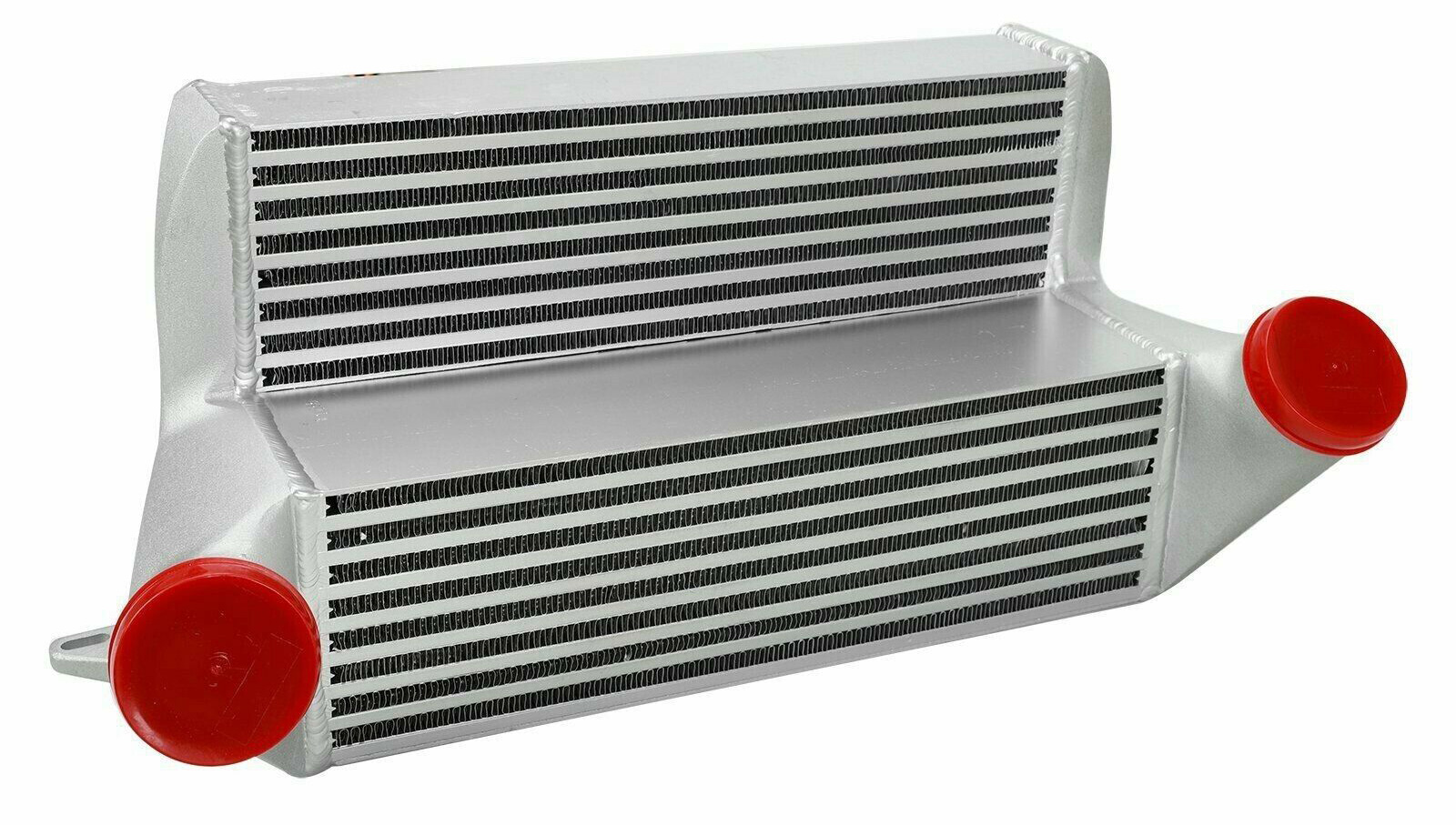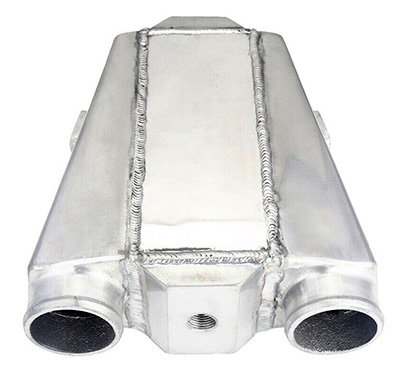Cars with naturally aspirated engines get a steady supply of cool air. But if your vehicle uses forced induction and you want to max out on horsepower, it’s time to consider an intercooler.
There are two major types of forced-induction systems:
- A supercharger compresses air to pack it into the engine.
- A turbocharger uses exhaust gases to increase engine power.
In both cases, forced induction warms the the air. A supercharger compresses the air, increasing its heat. And with a turbocharger, which uses hot exhaust gases, the temperature increases even more.
Here’s the issue: Cooler air generally holds more oxygen. And that additional oxygen allows the engine to produce more power. While most relatively new vehicles with forced induction already have an intercooler, many old-school turbo cars lack an intercooler.
Intercoolers got their name from jet-engine designers who created a way to cool the air between two jet turbines. The name stuck when the devices were put in cars. Intercoolers are also called after-coolers or charged-air coolers.
Air or Water?
There are two types of intercoolers: air-to-air and water-to-air. They are similar in design but have distinct advantages and disadvantages.
How Air-to-Air Intercoolers Work
An air-to-air intercooler cools down the pressurized air before it reaches the engine. The device has tubes and fins (similar to a car radiator) that continuously refreshes with ambient air. There are three types of air-to-air intercoolers.
Front-Mounted Intercoolers (FMIC) are typically placed in front or near the car’s radiator. An FMIC relies on the air coming through the front grill to flow over the intercooler’s tubes and fins. FMIC intercoolers are efficient due to their size and placement in the grille. However, the units need a larger grille opening, which can sometimes reduce the car’s aerodynamics.

A stepped intercooler maximizes the use of available space to increased air cooling.
A variation of the front-mounted intercooler is “stepped.” Stepped intercoolers work with a shorter front-facing set of tubes and fins, backed with with a taller unit behind them. This design has more fins and tubes packed in a small space.

A side-mounted cooler often relies on ducting to access the cooler air.
Side-Mounted Intercoolers (SMIC) are placed along the fender wells and rely on ductwork to channel fresh air over the intercooler. This approach requires more plumbing to get air to where it needs to go. However, it frees up space around the front grille. Because side-mounted intercoolers are smaller due to limited space, they are frequently used in a pair. Twin intercoolers placed on both sides of the engine max out the cooling.

Twin intercoolers
Top-Mounted Intercoolers (TMIC) live on the top of the engine compartment. They usually rely on hood scoops for a sufficient supply of fresh air. These trade the large front grille opening for a lower profile hood scoop.
How Water-to Air Intercoolers Work

A water-to-air intercooler requires more work to install and route the plumbing lines.
Water-to-air intercoolers have water running through the fins and tube. These intercoolers work similarly to a car’s radiator. The intercooler recirculates the water, cooling it off. Some systems pump water directly into the engine intake to cool the gasses as they enter the engine.
Either way, the design requires plumbing for both the cooling water and the incoming air. This makes for a tight and complicated engine compartment.
Many drag racers use ice water to feed into water-to-air intercoolers. You often see bags of ice resting on the intercoolers to cool them down before a car’s run. This trick only works on short-duration runs and not with a vehicle at sustained speeds.
Buying an Intercooler: Surface Area, Weight and Cost

Installing an intercooler often require extensive plumbing of the forced gasses.
If you’re shopping for an intercooler, consider how much surface area is available. There’s only so much space to accommodate the intercooler, so size is a critical consideration.
Weight is less critical because most intercoolers are aluminum. The intercooler’s end tanks terminate the airflow. However, if those are made of plastic, these pieces can fail over time due to age and heat.
Intercoolers are often painted, anodized, or powder-coated. The surface of a painted intercooler can show signs of age and wear faster.
Now that you know how intercoolers work, here’s a quick maintenance tip: Check the intercooler’s fittings for leaks—and clean it every two years or 24,000 miles.
A basic build-your-own intercooler kit starts at around $200. However, the costs can quickly rise to thousands of dollars based on the complexity and size of the unit. Higher-priced units, which are usually designed for a specific car, maximize the amount of cooling to push every ounce of extra air into the engine—and every extra bit of power out of your ride.
Shop now for intercoolers




